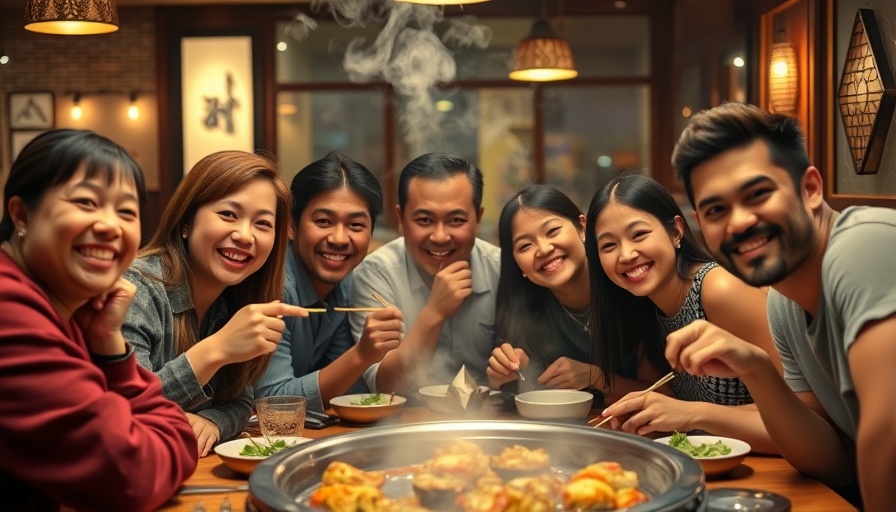
South Korea's Culinary Scene: A Fusion of Tradition and Innovation
As culinary travel reaches new heights in 2025, South Korea has dramatically elevated its profile as a global food destination. Boasting 40 MICHELIN-starred restaurants listed in the latest MICHELIN Guide for Seoul & Busan, travelers are discovering a dining landscape where traditional flavors meet innovative techniques. The continued interest in South Korean cuisine highlights more than just food; it opens the door to meaningful cultural experiences that convey the country's rich history.
Culinary Tourism on the Rise
The global culinary tourism market is expected to soar from approximately $1.17 trillion in 2025 to $3.77 trillion by 2032. This surge signifies that tourists are increasingly prioritizing unique dining experiences while exploring new destinations. In fact, a recent survey revealed that 64% of visitors to South Korea attribute their trip's purpose to the country's culinary delights. This reflects a growing recognition that food is a vital component of cultural identity.
Embracing Sustainable Practices and Traditional Techniques
South Korea's culinary renaissance isn't merely a celebration of modern gastronomy; it firmly roots itself in tradition as well. The inclusion of jang-making (fermented soybean-based sauces) and kimjang (kimchi-making) in UNESCO’s Intangible Cultural Heritage list emphasizes the deep-seated culinary practices that reflect a past rich with heritage. These traditional methods are now being melded with contemporary, sustainable practices, showcasing Korea's commitment to environmental responsibility within its culinary sector.
Highlighting the Culinary Standouts of 2025
This year’s MICHELIN Guide is a testimony to the remarkable evolution of Korean cuisine. Among the new accolades:
- LÉGUME (1 Star): Seoul's first-ever vegan MICHELIN-starred restaurant and Asia's only one among a mere ten worldwide. Under Chef Sung Si-woo’s innovative vision, LÉGUME champions plant-based cuisine rooted in Korea's sustainable dining ethos.
- MINGLES (3 Stars): Chef Kang Min-goo reinterprets traditional Korean flavors at Mingles, achieving three Michelin stars and making it a hotspot for discerning global culinary travelers.
- ESCONDIDO (1 Star): As the first Mexican restaurant in Asia to receive a MICHELIN star, Escondido exemplifies Korea’s multicultural dining scene, offering a delightful fusion of flavors.
Seoul and Busan: Food Capitals of the Future
Gwendal Poullennec, the international director of the MICHELIN Guide, remarked that Seoul has confidently positioned itself as a culinary hub. As more diners explore Busan's vibrant food offerings, the expectations for the city’s culinary future are soaring. With 186 restaurants in Seoul and 48 in Busan featured in the 2025 guide—including 29 new entries—there's a palpable enthusiasm for the expanding depth and diversity of Korean cuisine.
Planning Your Culinary Adventure in South Korea
For those eager to explore South Korea's thriving food scene, planning ahead is crucial. Sample local specialties such as bibimbap and bulgogi, but also dive into modern interpretations at innovative establishments like LÉGUME and MINGLES. By engaging with food, you’re not just tasting a meal; you’re tasting a piece of South Korean culture and history.
Final Thoughts on Culinary Travel
The rise of South Korea as a culinary powerhouse is an encouraging narrative for the travel sector. As families, educators, and travel enthusiasts refine their discovery of the world, embracing culinary tourism is a compelling pathway. By immersing in diverse flavors and experiences, travelers can not only satisfy their palates but also enrich their understanding of the global cultural tapestry. So why wait? Pack your bags and get ready to embark on a mouthwatering journey to South Korea!
 Add Row
Add Row  Add
Add 




Write A Comment